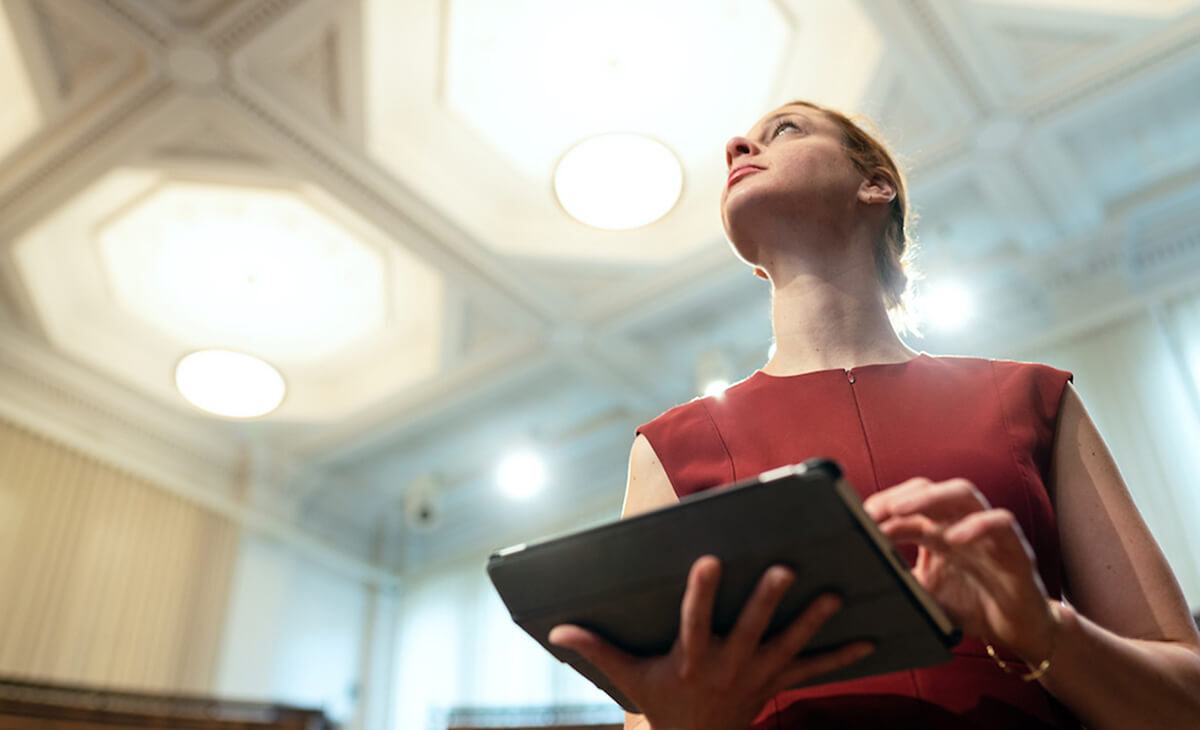
How to enhance your TV Listening Experience
This home entertainment speaker system can improve the listening experience for all of us who find the sound quality on television programmes challenging.
Some of you reading this may have started to realise that your ears are not working as well as you would like them to. They may be missing a little bit of sparkle or pizazz. You may just want to hear things a little more easily. You may want to engage more with conversation, with family or with friends. You may want to engage more with music in a way that you remember. You may want to go out more often and engage with the people in your community.
There are ways in which we can help you to do this. The answer itself is not surprising. What is surprising is the vast array of features that currently reside within modern communication technology.
The answer is of course a hearing aid - or call it what you wish - hearing device, listening device, sound intensifier, communication device, personal sound amplifier, auditory prosthesis, earpiece, assistive listener, personal listener, audio apparatus, earbud. Or make your own name up. I know one person who has a Mickey on one side and a Minnie on the other. If that works for them, it works for me.
Whatever they are called, they should be able to perform to a level that enhances your daily life with minimum fuss. They should give you an awareness of very soft sounds, they should make normal conversation clearer and they should keep very loud sounds within your comfort area.
However, they do so much more than that. I’m going to talk about some of the features that are available in modern amplification devices, some of these will surprise you.
Everybody trying to listen experiences difficulties when in noisy places, it’s the nature of the environment. Modern amplification devices can help to dampen the noise and make it more comfortable for you to listen in such places. Automatic noise reduction systems can engage when you’re enjoying outside activities such as walking, cycling or golf in blustery conditions. They electronically minimise the impact of the wind blowing over the microphones. There are also noise reduction systems that reduce the annoyance of high impact sounds such as crockery banging together or dropping a saucepan lid. They act quickly to subdue the sound without affecting the speech.
Well that’s a fancy sounding name but its quite a simple concept to understand. It’s the hearing aid in one ear communicating with the hearing aid in the other ear. So rather than having two hearing aids that work as two individual devices, you have two hearing aids that work as a team to produce a well balanced system. Their synergy produces better management of the speech signal in the presence of noise, improved localisation of sounds and synchronous volume control adjustments.

In these times ‘connectivity’ is a word frequently spoken, but what does it mean in terms of hearing aids. It’s your hearing aids ability to connect to other electronic devices such as smartphones. It is this ability to connect to other devices that has opened up a whole new world of opportunity to the hearing aid wearer. Let’s explore this new world and seek out the surprises it has to offer.

Another word that’s bandied about left, right and centre. Streaming is a method of transmitting and receiving data such as audio and video. There are many streaming services that we talk about everyday - Spotify and Netflix are two of the big names. There are also catch up services provided by the BBC such as iPlayer and their Sounds app. These services provide audio and video content that you can play through your phone or tablet. Connect your hearing aids to either the phone or the tablet and you now have the ability to hear the sound directly through the hearing aids, straight into your ears. This means you’re getting a sound that has been balanced exactly for your hearing ability delivered directly into your ears. Your own bespoke, equalised, personalised, audiovisual hearing system. Immense.

Hearing aids can now be altered and adjusted without having to come into the office for a physical face to face appointment. Again the smartphone is utilised to enable this feature. It usually involves having the hearing aid manufacturers app on your phone. Audiologist and patient would communicate through a text or video call at a pre-arranged time. They would then communicate, explain the issues and adjustments could be made. This is an extremely convenient feature for many people which can save travel time and help if people become housebound or live in more rural areas.

We have over recent months seen the first remote hearing tests becoming available. These don’t replace a full audiological evaluation but can be very useful if used appropriately. The tests are carried out by sending the test signals through the patients hearing aids whilst they are wearing them and in turn the patient will respond when they are able to hear the tones. The test will be useful if a patient has a problem in getting to the audiologists clinic.

Hearing aids now have the ability to act as tiny wellness assistants in your ears. They can monitor your daily movement, the number of steps that you take, how much exercise you do and how long you are stood for.
They can perform brain tracking, a monitoring system to ensure that you are engaging with people, stimulating the auditory system fully and getting out and about to use your hearing system in many varied listening situations.
There is a fall-alert detection system that will alert selected family members/friends/carers when a hearing aid wearer may have fallen and require some assistance. Perfect for an individual who may live by themselves and want that extra reassurance of knowing that someone will be there for them. They even have the ability to monitor your heart rate.

Now this one is quite astounding. Imagine being abroad in Spain and someone speaks to you in Spanish, the clever ones amongst us maybe able to use their skills to translate. But what if you can’t? Well it is now possible for the Spanish speaker’s voice to be translated via your phone and played automatically through the hearing aid in a language that you choose. It may sound a bit sci-fi but it is possible!

‘If this then that’, so what does that mean. It means, if we do this, carry out a certain action, then that, will produce a certain response. It is possible to connect your hearing aids up to an IFTTT service which in turn connects you to a multitude of electronic devices. So how is this useful? For instance, you can now purchase a smart doorbell, connect your hearing aids via IFTTT and you will be able to design your desired response. This could be when the doorbell rings, an alert is heard in the hearing aid, you can then choose to accept the call and interact with the person at the doorbell via the hearing aid audio and visually through your smartphone screen. Other devices you can connect to could be smoke detectors, thermostats, baby monitors, lightbulbs or even kettles.

It goes without saying that you can now control the hearing aid volume through your smartphone, it's a simple easy action. You can even change the volume in individual ears if you want to. However you can do much more than this. There are systems now where you can alter bass, mid-range and high frequency sounds depending on your personal preference giving you much more control over the sound you’re hearing. You can even choose to instruct your hearing aids to listen in a certain direction, for instance you could listen to what’s going on behind you rather than in front.

AI is when a machine is trained by humans to carry out a task that a human would be able to do. Machine learning, on the other hand, focuses on continued learning and ongoing problem-solving capabilities that go beyond human capabilities – instead of just mimicking them. Machine learning allows the hearing aid user to change the soundscape of a particular environment whilst they are in the moment rather than having to remember what happened and then try to explain that to the audiologist at their next appointment. It narrows down millions of possible sound alterations into a small number of steps. Mind blowing stuff.

I’m not going to speculate about where hearing aids will go in the future but I think it will be a very interesting future. I’ll think you’ll agree that modern hearing aids certainly have so much more to offer, possibly more than you had imagined.
Hopefully you will have clearly seen the benefits that can be derived. And although not all of these features may improve your life - the ultimate benefit to you is great hearing with great hearing devices.
Your hearing is a companion that travels beside you throughout life. It connects you to people and connects you to life. All those wonderful experiences where hearing has contributed to all the memories you remember and emotions you feel. There’s no need to lose any of that joy when you can have it all back again. Relive the moments that matter. The technology is there and ready for you.
Zoe Wyatt
